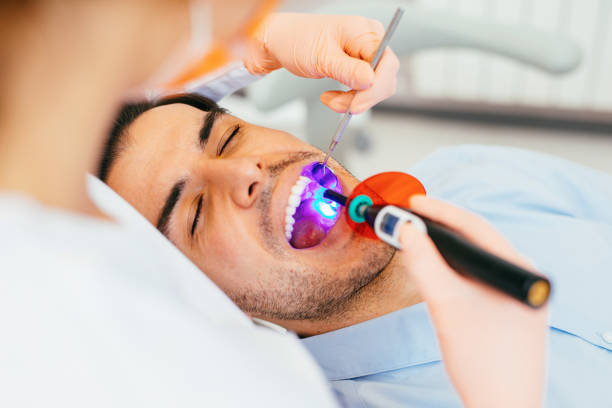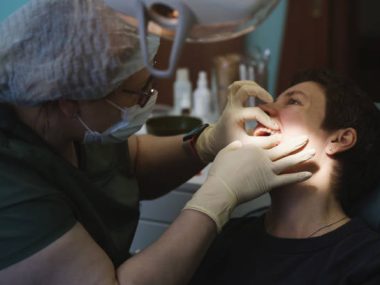How much is a dental cleaning without insurance? Maintaining optimal oral health is a fundamental aspect of overall well-being, and regular dental cleanings play a crucial role in achieving this goal.
However, the cost of dental procedures, including cleanings, can be a concern for many individuals, especially those without insurance coverage.
The question “How much is a dental cleaning without insurance?” is a common inquiry as people seek to understand the financial implications of essential dental care.
In this article, we will delve into the factors that influence the cost of dental cleanings.
By addressing the financial aspects of dental cleanings, we aim to empower individuals to make informed decisions about their oral health while considering their budgetary constraints.
Also Read:
How Much Is a Filling without Insurance?
How Much Is Invisalign without Insurance?
How Much Is a Dental Cleaning without Insurance?
The cost of a dental cleaning without insurance can vary based on several factors.
On average, a basic dental cleaning, also known as a prophylaxis, can range from $75 to $200.
However, this price can increase depending on location, the dentist’s experience, and the dental clinic’s pricing structure.
In urban areas or regions with higher living costs, the cost might trend toward the higher end of the range.
For individuals who require a deeper cleaning due to gum disease or excessive tartar buildup, a more intensive procedure called scaling and root planing may be necessary.
This can cost significantly more, ranging from $200 to $400 per quadrant of the mouth.
Dental specialists like periodontists usually perform these procedures.
To mitigate the costs, several options are available.
Some dental offices offer discounts for cash-paying patients, while others have membership plans that provide reduced rates for routine services.
Community dental clinics, dental schools, and nonprofit organizations can also offer more affordable alternatives for those seeking dental care without insurance coverage.
Regular dental cleanings are essential for preventing more expensive dental issues in the future, making them a wise investment in overall oral health and financial well-being.
Factors Influencing Dental Cleaning Costs
The cost of dental cleaning is influenced by various factors that contribute to the final price individuals may pay.
Firstly, the geographical location of the dental practice plays a significant role, as areas with higher living costs tend to have higher dental service fees.
The dentist’s experience and expertise are also factors; established professionals might charge more for their services.
The type of dental cleaning required affects the cost.
A standard prophylaxis is generally less expensive than a deep cleaning such as scaling and root planing, which involves more time and specialized skills.
The dental clinic’s facilities and equipment can also impact costs.
High-end clinics with modern technology might charge more to cover overhead expenses.
Moreover, the overall oral health of the patient matters.
Individuals with extensive tartar buildup or gum disease might require more time and effort, leading to higher costs.
Additional procedures like X-rays or fluoride treatments can contribute to the final bill.
Lastly, some dental offices offer discounts or membership plans for uninsured patients, which can help make dental cleanings more affordable.
Understanding these factors allows individuals to anticipate costs and make informed decisions about their dental care.
Tips for Budgeting and Planning for Routine Dental Care
Budgeting and planning for routine dental care is essential to maintain oral health without financial strain.
Firstly, consider setting aside a portion of your monthly budget specifically for dental expenses.
This proactive approach ensures you’re financially prepared when appointments arise.
Research is crucial. Compare prices among local dental clinics to find affordable options without compromising quality.
Look into dental savings plans or membership programs that offer discounted rates for routine cleanings and other services.
Prioritize preventive care; regular dental checkups can catch issues early, preventing costly treatments later.
Communication with your dentist is key.
Discuss your budgetary concerns openly, and inquire about cost-effective alternatives or phased treatments when applicable.
Take advantage of free or low-cost community dental clinics or dental schools, where supervised students perform treatments at reduced rates.
Maintaining good oral hygiene at home reduces the likelihood of needing extensive dental work.
Brush and floss diligently to prevent cavities and gum problems.
Lastly, consider exploring insurance options, even if not traditional coverage.
Dental discount plans or health savings accounts can provide financial assistance.
By implementing these strategies, you can effectively manage dental care costs while ensuring a healthy smile.
Also Read:
How Much Do Veneers Cost with Insurance?
Is Otto Insurance Legit? (Find Out Now)
Conclusion
Inquiring about the cost of dental cleanings without insurance is a responsible step toward managing oral health and finances.
While prices can vary, understanding factors influencing costs empowers informed decision-making.
Embracing proactive approaches such as seeking affordable clinics, utilizing dental savings plans, and maintaining regular oral hygiene contributes to long-term savings.
Remember, preventive care minimizes the risk of expensive treatments down the road.
By valuing dental health and leveraging available resources, individuals can prioritize their smiles without compromising their financial well-being.






